I haven’t kept up the monthly posting like I’d hoped, but I’m so freaking impressed with myself. I may not have posted much on this blog, but I read my ass of this year and finished Book Riot’s Read Harder Reading Challenge. I had most of it done in mid-November, but it took me a while to find the one remaining book—a picture book—to finish it off. I also finished my Goodreads challenge, but it wasn’t quite as… challenging.
For Goodreads, I set my goal to 120 for 2024, basically allowing for reading 20 picture books and still reading 100 non-picture book books. But it ended up not being picture books that helped me top that number, but rather graphic novels. I read several, but went on a major cat manga kick (though I read some other great non-manga stuff, too).
For the Read Harder Challenge, there were 24 books meeting specific topic etc. criteria, and I managed to get them all. I did change a few of the books from what I said I would in the January post, though I mostly stuck with the plan. Here’s what I read:
Cat Massage Therapy, Vol. 1 by Haru Hisakawa (a manga or manhwa) - very cute, easy read
The Deep & Dark Blue by Niki Smith (a middle grade book with an LGBTQIA main character) - a nice little fantasy about family and gender
The Cat Who Saved Books: A Novel by Sosuke Natsukawa & Louise Heal Kawai (a book about books (fiction or nonfiction)) - I admit that I not love this book - I think it too much on-the-nose philosophy for me
This One Summer by Mariko Tamaki & Jillian Tamaki (a comic that has been banned) - a slightly surreal queer story dealing with abuse (the fact that it was banned is idiotic)
Charming as a Verb by Ben Philippe (a book based solely on the title) - a nice story about a couple of high-achieving Black kids in a sea of rich white kids
Ophie's Ghosts by Justina Ireland (a middle grade horror novel) - I loved this book—it’s very different from the author’s Deathless Divide series (as in it’s MG-appropriate), but it deals with some tough topics about race and history in a meaningful and informative way (it’s sadly relevant today given the efforts southern states have been going to to suppress Black people’s votes)
Act Your Age, Eve Brown by Talia Hibbert (a romance with neurodivergent characters) - I’ve loved every book in this series and this was no exception
"You Just Need to Lose Weight": And 19 Other Myths About Fat People by Aubrey Gordon (a book recommended by a librarian) - all very true, and a bit depressing, but there is some hope there, too
The Art of Saving the World by Corinne Duyvis (a genre book (SFF, horror, mystery, romance) by a disabled author) - this was an interesting multi-dimensional YA sci-fi
No Straight Lines: Four Decades of Queer Comics by Justin Hall (Editor) (a book about drag or queer artistry) - most of it was new to me, but an interesting look at queer comics over the decades
Rob Anderson’s Gay Science event in April (a book by an author with an upcoming event (virtual or in person) and then attend the event) - this book is so, so funny because it plays with stereotypes, which I love as long as it’s not mean (and it’s not mean)
The Many Half-Lived Lives of Sam Sylvester by Maya MacGregor (a YA book by a trans author) - this was a really unusual story that I ended up loving, although it did take me a little bit to get into it
“The Lifecycle of Software Objects” by Ted Chiang (a sci-fi novella) - this was interesting and thought-provoking without being overwhelmingly so (I did also read All Systems Red by Martha Wells, my original intended read for this category)
Maud's Line by Margaret Verble (a historical fiction book by an Indigenous author) - I loved this book about a young Cherokee woman in northeast Oklahoma making not-the-best choices while working hard to both find her purpose and keep her family together
Algorithms of Oppression: How Search Engines Reinforce Racism by Safiya Umoja Noble (a book about media literacy) - a great study of Google’s prejudiced results along with a good discussion of what we can (and should) do about it
Code Name Badass by Heather Demetrios (a YA nonfiction book) - another biography of the truly badass American WWII spy, Virginia Hall
Chronicle of a Death Foretold by Gabriel García Márquez & Gregory Rabassa (Translator) (a book in translation from a country you’ve never visited) - so I didn’t love this, but it was short
Caste: The Origins of Our Discontents by Isabel Wilkerson (a history book by a BIPOC author) - this is one of the best books I’ve ever read on any topic (she’s so crystal clear in explaining things that can seem cloudy and/or complex)
White Fragility: Why It's So Hard for White People to Talk About Racism by Robin DiAngelo (a challenge from any of the previous years’ challenges to repeat: A challenge from 2021 (Read a nonfiction book about anti-racism)) - very good
The Loneliness Files by Athena Dixon (a book that went under the radar in 2023) - some interesting musings on being alone, something I’m quite familiar with
Legends & Lattes by Travis Baldree (a cozy fantasy book) - I originally put off reading this because there was so much hype about it on BookTok, but I finally picked it up and accidentally powered through it in two “school nights”
English as a Second Language by Jaswinder Bolina (an indie published collection of poetry by a BIPOC or queer author) - I am not a fan of poetry and probably never will be because just looking at it on paper makes me feel anxious, but these poems talked about some interesting stuff
Clark and Division by Naomi Hirahara (a “howdunit” or “whydunit” mystery) - a good mystery set just after the WWII Japanese internment with
Big by Vashti Harrison (a picture book published in the last five years) - a really nice book about looking within for strength when the world taunts you for how you look
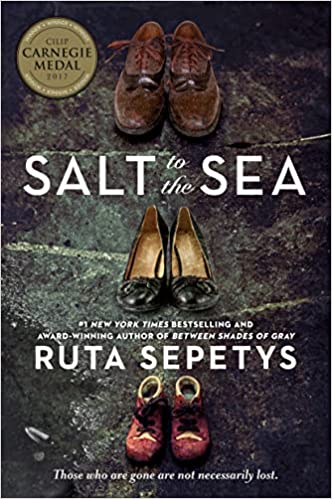 Setup
Setup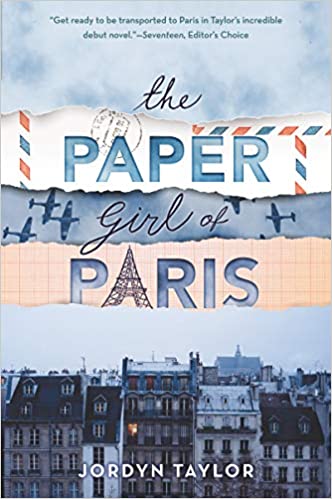 I haven’t been a big reader of historical fiction, even though when I do read it, I usually enjoy it. But I recently read another one I really liked, so I picked up a couple when I went to Barnes and Noble recently.
I haven’t been a big reader of historical fiction, even though when I do read it, I usually enjoy it. But I recently read another one I really liked, so I picked up a couple when I went to Barnes and Noble recently.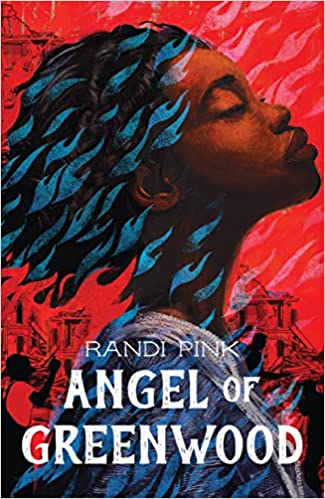 As soon as I knew this book existed, I bought it. It’s set amidst the Tulsa Race Massacre. I have a special interest in that event because I grew up in Tulsa and knew nothing about it until about five years ago. It blows my mind that this is something that was “forgotten.” It makes me so mad, but it fits right in with all the Republicans who are insisting that the unsavory parts of our history shouldn’t be taught in school because it might make some little white kids feel guilty. A little guilt never hurt anyone, and it would make it easier for them to understand their privilege. I think this is actually quite important.
As soon as I knew this book existed, I bought it. It’s set amidst the Tulsa Race Massacre. I have a special interest in that event because I grew up in Tulsa and knew nothing about it until about five years ago. It blows my mind that this is something that was “forgotten.” It makes me so mad, but it fits right in with all the Republicans who are insisting that the unsavory parts of our history shouldn’t be taught in school because it might make some little white kids feel guilty. A little guilt never hurt anyone, and it would make it easier for them to understand their privilege. I think this is actually quite important.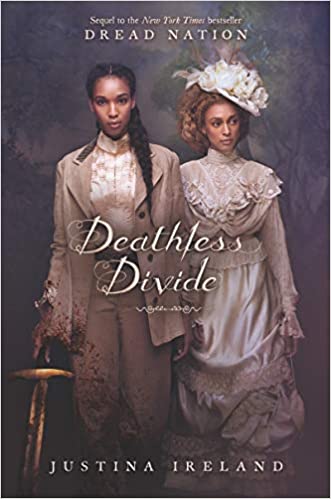 Context
Context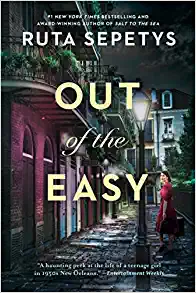 Josie is one of those amazing characters who, like a handful of incredible people I’ve known in real life, wants more out of her life than what she’s been dealt as the daughter of a brothel narcissistic prostitute—and she’s willing to work for it. It’s the 1950s in New Orleans and life is hard for a lot of people. But Josie’s observant and smart (both academically and street-smart), and she has a great deal of self-respect. It’s virtually impossible not to like her and root for her.
Josie is one of those amazing characters who, like a handful of incredible people I’ve known in real life, wants more out of her life than what she’s been dealt as the daughter of a brothel narcissistic prostitute—and she’s willing to work for it. It’s the 1950s in New Orleans and life is hard for a lot of people. But Josie’s observant and smart (both academically and street-smart), and she has a great deal of self-respect. It’s virtually impossible not to like her and root for her.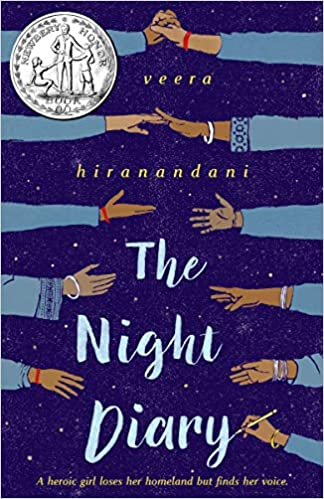 I don’t often review middle grade here (I don’t often read middle grade, either), but I’m making an exception for this book because it was so good. It also felt more borderline lower-YA to me.
I don’t often review middle grade here (I don’t often read middle grade, either), but I’m making an exception for this book because it was so good. It also felt more borderline lower-YA to me.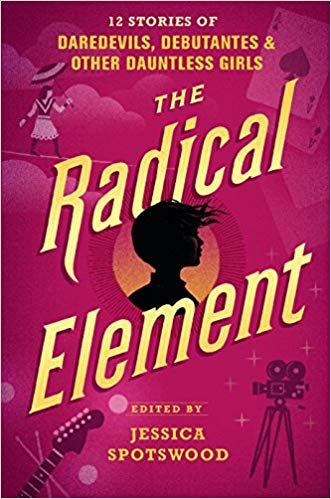 This book is a collection of short stories set in various points of US history ranging from 1838 to 1984. The stories are all about girls bucking the system in some way, but those ways vary widely over the book. The stories are all realistic except for a couple that have some magical realism elements. The stories also run the gamut on the diversity spectrum, including girls of several different religions, several protagonists of color (and different ethnicities, too), at least one lesbian, one character in a wheelchair, and another on the autism spectrum.
This book is a collection of short stories set in various points of US history ranging from 1838 to 1984. The stories are all about girls bucking the system in some way, but those ways vary widely over the book. The stories are all realistic except for a couple that have some magical realism elements. The stories also run the gamut on the diversity spectrum, including girls of several different religions, several protagonists of color (and different ethnicities, too), at least one lesbian, one character in a wheelchair, and another on the autism spectrum. This is a book that came to me from one of those YA book clubs I belong to as I’d never heard of it. But I’m actually surprised there isn’t a little more hype around it because it’s very good and it’s got a believable badass girl in it. I guess historical fiction isn’t where it’s at right now.
This is a book that came to me from one of those YA book clubs I belong to as I’d never heard of it. But I’m actually surprised there isn’t a little more hype around it because it’s very good and it’s got a believable badass girl in it. I guess historical fiction isn’t where it’s at right now.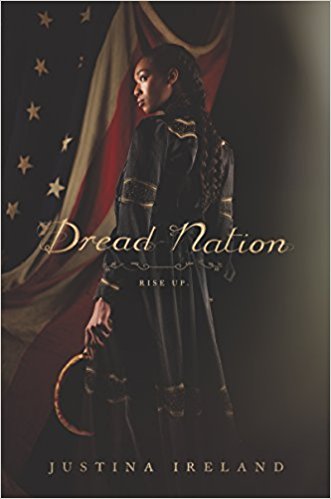 This is really a remarkable and very powerful book. First off, it’s a very engaging and exciting story with some action. You’ve got the Civil War setting and you’ve got zombies. I’m pretty sure that Civil War era isn’t a common setting in YA historical fiction, so that’s a nice thing right there. But Ireland has really twisted that setting with her introduction of zombies, or shamblers as they call them in the book (which is, by the way, an awesome term).
This is really a remarkable and very powerful book. First off, it’s a very engaging and exciting story with some action. You’ve got the Civil War setting and you’ve got zombies. I’m pretty sure that Civil War era isn’t a common setting in YA historical fiction, so that’s a nice thing right there. But Ireland has really twisted that setting with her introduction of zombies, or shamblers as they call them in the book (which is, by the way, an awesome term).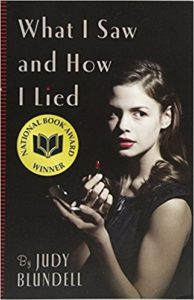 What I Saw and How I Lied is an interesting historical, set just after WW II. It features quietly bold 15-year-old Evie, whose mother is a bombshell while Evie herself is a bit plain. And she’s not happy about it. Her stepfather is a charming sort but when he gets frustrated by something, they take off in the car and head from Brooklyn to Palm Beach, Florida. There, Evie learns a lot of surprising and not-so-nice things about the world and her parents. She also meets a man who she falls for, despite the fact that he’s 8 years older. It eventually seems to her that pretty much everything she believed about her parents and their life together was a lie. Then she’s put in a position no one wants to be: she has to betray someone—but will it be her parents or the man she’s fallen in love with? And what about the truth—how important is that compared to family loyalty?
What I Saw and How I Lied is an interesting historical, set just after WW II. It features quietly bold 15-year-old Evie, whose mother is a bombshell while Evie herself is a bit plain. And she’s not happy about it. Her stepfather is a charming sort but when he gets frustrated by something, they take off in the car and head from Brooklyn to Palm Beach, Florida. There, Evie learns a lot of surprising and not-so-nice things about the world and her parents. She also meets a man who she falls for, despite the fact that he’s 8 years older. It eventually seems to her that pretty much everything she believed about her parents and their life together was a lie. Then she’s put in a position no one wants to be: she has to betray someone—but will it be her parents or the man she’s fallen in love with? And what about the truth—how important is that compared to family loyalty?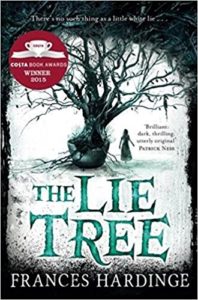 The Lie Tree is a fascinating and unusual book. The idea of the lie tree itself is interesting and creative. The novel touches on feminism, the nature of lies and truth, growing up, knowing yourself, familial love, and fairness. There’s a sense of foreboding throughout that escalates and escalates until the climax. It took me a while to read, but I think that’s because it made me so nervous for the main character, Faith Sunderly, that I would have to set it down. As I neared the end of the book, it was hard to see what would happen next. It’s usually categorized as dark fantasy, but I’d say it’s at least pseudo-horror for the effect it had on me.
The Lie Tree is a fascinating and unusual book. The idea of the lie tree itself is interesting and creative. The novel touches on feminism, the nature of lies and truth, growing up, knowing yourself, familial love, and fairness. There’s a sense of foreboding throughout that escalates and escalates until the climax. It took me a while to read, but I think that’s because it made me so nervous for the main character, Faith Sunderly, that I would have to set it down. As I neared the end of the book, it was hard to see what would happen next. It’s usually categorized as dark fantasy, but I’d say it’s at least pseudo-horror for the effect it had on me.